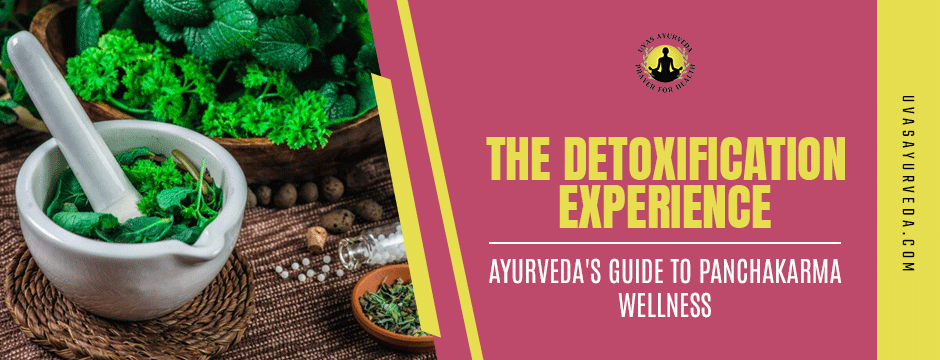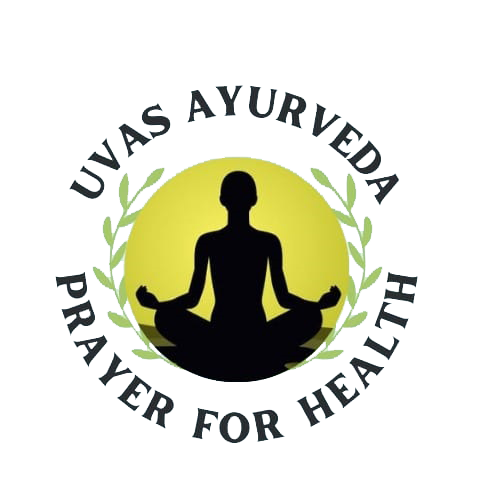
Ayurvedic Panchakarma treatment is a holistic and transformative therapeutic approach that forms an essential part of traditional Ayurvedic medicine. In the ancient tradition of Ayurveda, the practice of Panchakarma has long been revered as a powerful means of cleansing and rejuvenating the body, mind, and spirit. As we navigate the complexities of modern life, the need for deep, holistic detoxification has become increasingly essential.
The Foundations of Panchakarma
The term “Panchakarma” comprises two words: “Pancha” (meaning five) and “Karma” (meaning actions). Panchakarma, the Sanskrit term meaning “five actions,” is a comprehensive system of purification and rejuvenation. It encompasses a series of therapeutic procedures aimed at eliminating accumulated toxins, restoring balance, and revitalizing the entire being. The five key components of Panchakarma are:
Vamana (Therapeutic Vomiting): This practice helps to cleanse the upper digestive tract and respiratory system, removing accumulated kapha and toxins. Vamana is effective in treating respiratory disorders, allergies, and congestion-related conditions.
Virechana (Purgation): Through the use of herbal laxatives, Virechana cleanses the lower digestive tract, eliminating excess pitta and toxins. It is effective in pitta oriented diseases such as skin disorders, hemiplegia, Paraplegia, Rheumatoid arthritis , Gouty arthritis etc
Basti (Enema): Basti targets the colon, using medicated oils or decoctions to purify the system and restore balance. Basti is beneficial in treating chronic constipation, neurological disorders, and joint-related conditions.
Nasya (Nasal Administration): Nasya involves the application of medicated oils or powders to the nasal passages, clearing the sinuses and nourishing the head and neck. This procedure helps in clearing the respiratory passages, improving sensory organs, and addressing conditions like sinusitis, headaches, and certain neurological disorders like cervical spondylosis.
Raktamokshana (Bloodletting): This specialized practice, though not always included, helps to purify the blood and address specific imbalances. Raktamokshana is a specialized procedure that involves the controlled removal of a small amount of blood from specific points on the body. It is used to balance Pitta- raktha related disorders, improve blood circulation, and manage skin conditions and also in diseases such as alopecia areata, melasma, Baldness of scalp, varicose veins and varicose ulcers, other chronic ulcers etc.
Action of Panchakarma:
Ayurveda is based on the principle of promotion of health and prevention of illness rather than disease elimination. Ayurveda focuses on maintaining health by balancing the three physiological forces of the body called as Tridoshas – Vata, Pitta , and Kapha.
The balance of these doshas provides good health and longevity. If the balance is disturbed, metabolic toxins may accumulate in the body. These toxins can create blockages in the functions of various body systems, including the digestive, lymphatic, circulatory, and nervous systems. This can lead to various disease.
Panchakarma therapy can help the body eliminate these metabolic toxins or the waste products that have accumulated and lodged in the body. When these toxins are removed Ayurveda’s Guide to Panchakarma Wellness, the body can regain its natural strength and normal functions. By doing so it helps to recover from the diseases as well.
The Panchakarma Journey
The Panchakarma experience is a carefully orchestrated process, tailored to the individual’s unique constitution and current state of health. It typically begins with a pre-cleansing phase, known as Purvakarma, which prepares the body for the deeper detoxification.
Purvakarma consists of
Deepana-Pachana: This step involves the oral administration of medicines to enhance Agni (the digestive fire) and improves metabolism, making them easier to eliminate from the body.
Snehana : Snehana includes both internal and external oleation. Internally medicated ghee is ingested in gradually increasing doses for a period of 3 to 7 consecutive days. External oleation involves body massage or abhyangam using specific herbal oils as per the physical state of the individual. These help to loosen and mobilize the stubborn accumulated toxins from the periphery to the digestive track from which it get eliminated out easily. It softens the superficial and deep tissues, and nourishes the nervous system.
Swedana : It is the method of inducing sweat through steam therapy. The person sits in a steam chamber filled with herbal decoctions. This process helps to detach toxins from the tissues and expel them through the sweat pores on the skin.
The main Panchakarma procedures then follow, each one building upon the previous step and addressing specific imbalances. The sequence and intensity of these treatments are determined by the Ayurvedic practitioner, based on the individual’s needs and the desired outcome.
Paschat Karma is the post-purification phase of Panchakarma, aimed at restoring the body’s equilibrium and rejuvenating the system. It involves specific diet and lifestyle management, along with the administration of rejuvenating medicines and herbal preparations. This stage comprises the following components
Sansarjan Karma: Sansarjan Karma is a gradual diet protocol designed to transition the individual’s diet from liquids to semi-solids and eventually to a normal diet. This generally includes the intake of liquid portion of rice gruel initially and later liquid part along with rice and then gradually he solid part alone. Soups are also advised during this period. It usually takes seven days for bringing back to the normal diet. This step ensures that the digestive power (Agni) is restored to its optimal level, allowing the body to assimilate nutrients effectively.
Rasayan: Rasayan refers to the administration of rejuvenating medicines and herbal formulations. These medicines help in the physical restoration of the body, enhance vitality, and promote overall well-being.
Shaman Chikitsa: After the main Panchakarma therapies, Shaman Chikitsa involves the addition of appropriate Ayurvedic medicines to further alleviate disease symptoms, if any remain. These medicines support the body’s healing process and aid in maintaining balance.
Throughout the Panchakarma journey, the individual is typically required to adhere to a specific dietary regimen, incorporating Ayurvedic principles of balance and nourishment. This helps to support the body’s natural healing processes and prevent the reaccumulation of toxins.

The Benefits of Panchakarma
The transformative effects of Panchakarma can be far-reaching, impacting both physical and mental well-being. Some of the key benefits include:
Detoxification: Panchakarma effectively eliminates accumulated toxins, heavy metals, and other harmful substances from the body, promoting a profound sense of cleanliness and rejuvenation.
Improved Digestion and Metabolism: By addressing imbalances in the digestive system, Panchakarma can enhance nutrient absorption, regulate bowel movements, and optimize metabolic processes.
Stress Reduction and Mental Clarity: The calming and restorative nature of Panchakarma can alleviate stress, anxiety, and fatigue, while fostering a greater sense of mental clarity and emotional balance.
Strengthened Immune System: The purification and balancing of the body’s systems through Panchakarma can significantly booster the immune system, making one more resilient to illness and disease.
Rejuvenation and Longevity: Panchakarma is believed to slow the aging process, promote cellular regeneration, and enhance overall vitality and longevity.
Integrating Panchakarma into Modern Life
In the fast-paced world we inhabit, the ancient wisdom of Panchakarma offers a timely and essential solution to the challenges of maintaining optimal health and well-being. By incorporating Panchakarma into our modern lifestyle, we can achieve a profound level of detoxification, rejuvenation, and balance.
Many Ayurvedic centers and practitioners now offer Panchakarma programs that are tailored to the needs of contemporary individuals, making this ancient practice accessible and relevant in the 21st century. Whether it’s a comprehensive, multi-day retreat or a series of targeted treatments, Panchakarma can be seamlessly integrated into one’s wellness routine.
Conclusion
The Detoxification Experience and Wellness invites us to embark on a transformative journey of purification and rejuvenation. By embracing the timeless wisdom of Panchakarma, we can reclaim our innate balance, vitality, and connection to the natural rhythms of our body, mind, and spirit. As we navigate the complexities of modern life, the ancient practice of Panchakarma stands as a beacon, guiding us towards a profound state of wellness and wholeness.
Uvas Ayurveda is a Panchakarma treatment centre and provide all the treatments under the supervision of trained practitioners and treatments are given by trained therapists. Main treatments conducted here are Vamana, Virechana, Anuvasana Basti, kashaya Basti, Leech Therapy, Nasya, Akshi Tharpana, different types of Pottali swedanas like Valuka Pottali, Patra Pottali, churna Pinda sweda, navara Kizhi or Sashtika shali Pinda sweda, Abhyangam, Bashpa Swedana, Dhara, different types of Shiro dhara like TakraDhara, Thaila Dhara, Ksheera Dhara, Agnikarma, etc.
For each person the treatments are tailor made. As per the prakruthi, dosha vitiation and different disease conditions the treatments are provided. We have all the required equipments like Paathi (the massage table), Steam chamber, dhara vessels, equipments for doing Vasthi etc. Before and after each treatment consultations are provided.
Uvas Ayurveda is a global center of learning for Ayurveda enthusiasts, offering a diverse range of online, offline, and residential Ayurvedic courses and treatments. It serves as a dynamic fusion of a treatment center and a thriving hub for Ayurvedic education.
Uvas Ayurveda offers online/offline/ residential courses on various subjects like:
- Woman Care (Stree)
- Pregnancy Care(Garbha Matha Sanskar)
- Nutrition, Diseases and Diet (Pathyapathya)
- Weight Management (Obesity)
- Ayurvedic Cosmetology (Soundarya)
- Ayurcharya for beginners ( Basics on Ayurveda)
These Ayurveda courses offer more than just knowledge; they provide practical tools to improve your daily living and align with nature, promoting a healthy lifestyle. By delving into the teachings of Ayurveda, you gain insights that go beyond theory and empower you to make positive changes in your life. These courses equip you with the wisdom and practices to live in harmony with nature, fostering a healthier and more balanced existence.
Contact details:
Dr .Priya Jain
Uvas Ayurveda
Jp nagar, Bangalore
www.uvasayurveda.com
ayurvedauvas@gmail.com


Leave A Comment